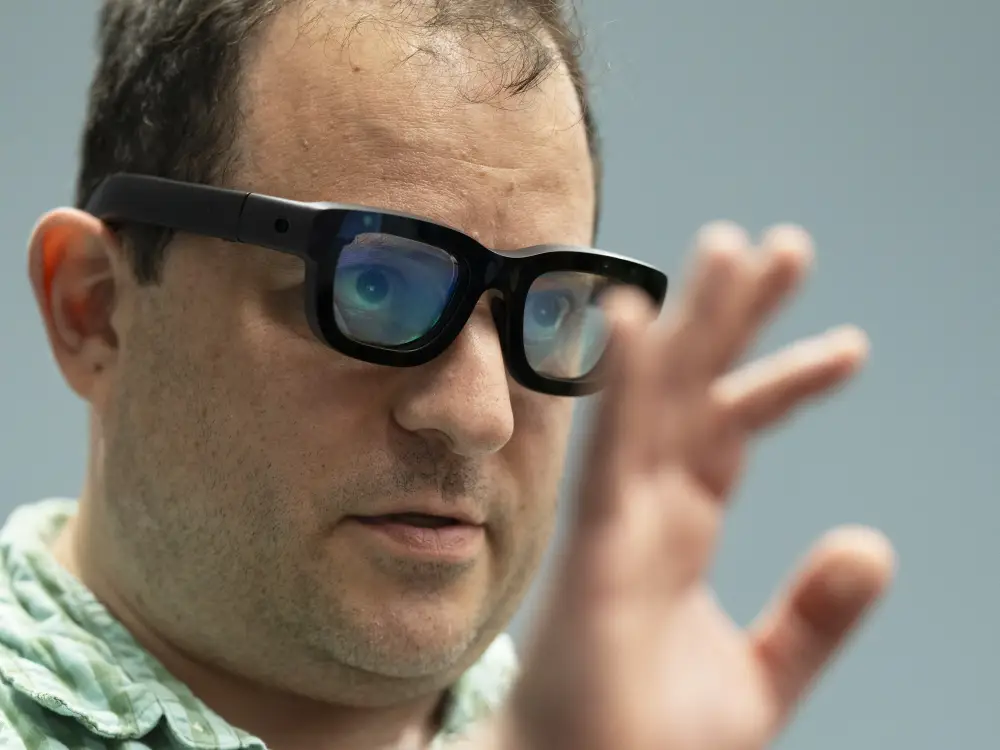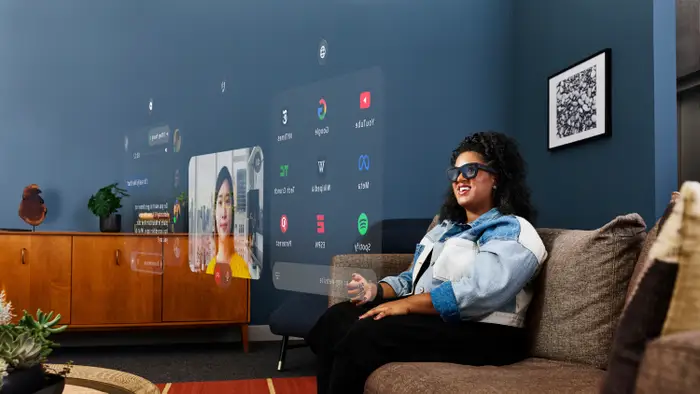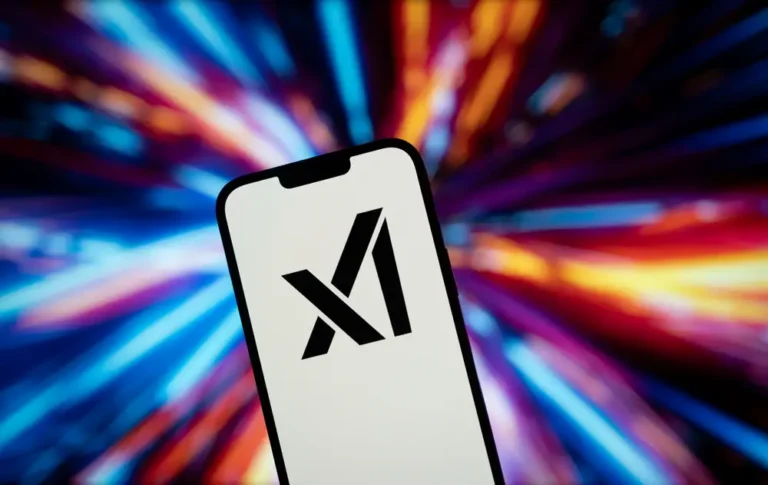I tried out Meta’s Orion computer glasses. I’d buy them in a heartbeat — if they were actually for sale.

I tried Meta’s Orion computer glasses, and they are very cool.
Here is what you need to know about Orion, the new computer-on-your-face nerd glasses Mark Zuckerberg showed off today:
1.You can’t buy them. And you won’t be able to anytime soon. It’s possible you never will.
Each pair of glasses reportedly costs Meta $10,000 to make, and the company says it needs time to get them to a price that makes them plausible — think something in the $1,000-ish range, like a laptop or high-end phone. (That $10,000 number comes from The Verge’s Alex Heath. Meta declined to comment on the number).
If all goes well, it could take a few years for that to happen.
- I’ve tried them, and they are very cool!
They don’t make you look cool — you look like someone wearing tech on your face — but the ideas and engineering behind them are really fascinating. If you’re one of the people who complains that Silicon Valley hasn’t made anything except soul-sucking social networks and monetization machines for years, here’s a compelling counter.
More important: Unlike other face-computing tech I’ve tried over the years — Google’s Glass, Apple’s Vision Pro, Meta’s own line of Quest goggles — this is one I can actually imagine buying, and using, in real life.
My brief experience with Orion comes with major caveats. The biggest is that it’s not actually ready for mass production. But if this pans out, it will deliver what lots of people in tech, and outside of tech, say they want: a wearable computer jammed into a pair of glasses.
What would you do with a wearable computer?
For starters, lots of things you can do with a phone: Take and make phone calls and video calls. Send and receive texts. Take photos and videos. Watch videos. Play time-wasting games. Play around with AI.

Meta’s Orion glasses can serve many of the same purposes as a smartphone.
And because Orion sits on your face like glasses — bulky glasses that use silicon carbide instead of glass — you can do all of those things while looking at, and interacting with, everything and everyone around you.
This is “augmented reality” — digital images laid over the real world. As opposed to “virtual reality” — where you are totally enveloped by a digital landscape.
There are obvious downsides to this. If you think it’s frustrating to talk to someone who keeps looking at their phone to check a text or a viral video, imagine what it will be like to hold a conversation with someone who’s staring at you and staring at something else at the very same time.*
But there are very intriguing upsides, too. Most obviously: Picture yourself with a task — like changing a tire, making marinara, or solving a math problem — and the ability to simultaneously look at the thing you want to do and instructions on how to do it.
Orion uses eye tracking, which means you select digital items just by looking at them. And you manipulate them — turn an app on or off, respond to a text message, swipe through videos on Reels — by making subtle flicks and clicks with your fingers. Those gestures get registered by a snug-but-not-bulky wristband** that registers your muscles’ movements using electromyography*** and transmits them wirelessly to your glasses.

Meta’s Orion glasses are connected to a wristband that reads muscle movements.
Orion also comes the closest I’ve seen to a face computer you could take for a stroll. Unlike other devices I’ve seen, it doesn’t need to be plugged into a bulky power source or tethered to a phone. Instead, it connects wirelessly to a TV-remote-sized power/computing device you can slip into your pocket that connects to the internet via wifi or cell signals. Meta says its battery will last for two to three hours of continual use.
And here, I’m going to stop talking about Orion’s specs. Because it seems pretty silly to get very deep into a thing that’s still in development and may never actually materialize for mass production.
It’s also important to stress that my brief demo time was in a Meta building, surrounded by Meta employees who guided me through a Meta-scripted walkthrough. I have no idea how, or if, this thing works in the real world.
Neither do Meta executives, really. They say they’re about to start “dogfooding” the device with lots of employees to get a better sense of how it performs while continuing to figure out how to make it lighter and cheaper.
Which brings us to two questions about Zuckerberg’s reveal this week.
First: Why is Meta showing off something no one’s going to be able to buy — at best — for years? This reminds me of pre-iPhone reveals, where it was common for tech companies to show you stuff they might make one day, but very often didn’t.
When I ask Meta executives that question, they murmur about wanting their fellow employees to see the work they’re doing, and to be encouraged by the progress they’re making. But surely there are other ways to pump up morale — like having a record-high stock price, which happens to have happened this week.
My theory relates to that stock price: that Zuckerberg, who has gotten grief over the years for plowing billions into his metaverse dreams, wants to show the world — and specifically investors — that all those dollars weren’t wasted. And that he’s getting very close to a consumer device people might buy in very large numbers.
Which brings us to my second question: Why does Meta, whose online ad business is one of the world’s greatest money-printing machines, want to make hardware anyway?
That one is easier to answer. Most practically: As great as that money-printing machine is, it can’t work without phones made by Apple and Google — companies that force Meta to play by their rules and restrictions. If Orion, or any other device Meta makes, becomes the future of computing, then Zuckerberg can operate his business on his devices.
But if you’re into vibes-based answers: Orion’s debut is part of the Mark Zuckerberg 3.0 era.
One where he says he’s done apologizing (even though he’s still apologizing) and done with politics (even though politics is not done with him). One where he’s trying new looks (including his own designs).
So if he wants to take a victory lap with very cool new tech — even if the tech isn’t quite ready for prime time? He’s going to do that, too.
*The entire time I played with Orion, I kept thinking about teenagers I see walking around with a single AirPod in their ear at all times. The idea, supposedly, is that they can keep listening to whatever they want while begrudgingly listening to you, too. I find that half-in, half-out way of interacting with the world incredibly frustrating. But I’m old. Your mileage may vary.
**For whatever reason, some Meta people call this a “neural wristband,” which makes it seem like it’s somehow reading your brain. Thankfully, it is not.
***(I had never heard of this term before this week, either).






